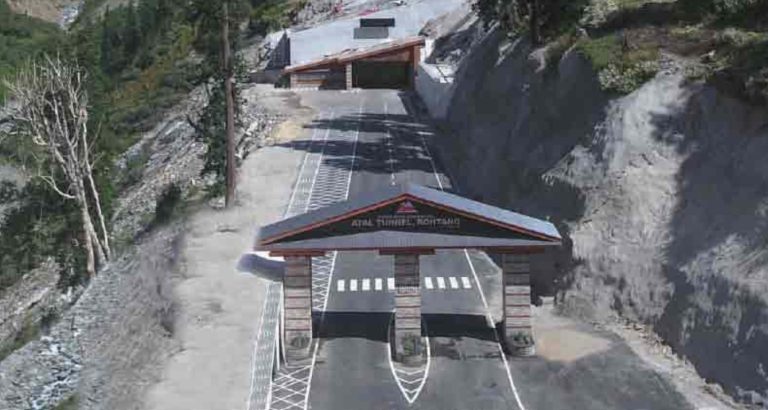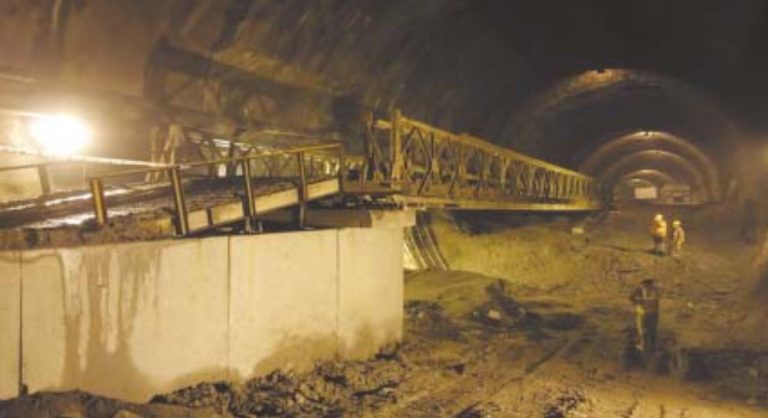An all-weather Tunnel connecting Leh region, Lahaul & Spiti Valleys and the rest of India across the Pir-Panjalranges where it merges into Greater Himalayas.
This is the world’s longest two lane single tube, bi-directional tunnel located at an altitude of 3000m above MSL. Its length of is 9.02Km and it was constructed using the New Austrian Tunnelling Method (MATM) through complex unstable geology with fault lines.
Facilities provided in the modified horseshoe shaped tunnel include Supervisory Control and Data Acquisition (SCADA) controlled electrical and safety systems, air-quality monitoring and tunnel ventilation systems and quick response to fire and accidents.
The Himalayas pose some of the most challenging geological conditions in the world. Being young-fold mountains in a formative stage and growing, they present relatively less stable rock formation with faults & fissures.
The over-burden of 1.9Km amongst highest in the world, caused extreme stress, while deformation as high as 861mm had to be tackled. There were also limits to gathered initial information on rock formation so far below the surface.
Three fracture structures encountered with repeated cave-ins with dislodging as large as 1000m3 of material. But the greatest challenge came where sheared and shattered rock-mass was encountered with heavy water ingress, at times at an unnerving 110liters/sec (Max 400KL/hr). Negotiating this 550m stretch took four years.
Changing rock formation was influenced by convergence of the Pir-Panjal Range with the Greater Himalayas, which had never been tunneled through. There was also surprising changes in rock encountered at North Portal, which added to engineering challenges.
Innovative solutions
Drainage Reinforced Excavation and Support Solutions (DRESS) were deployed and single & double pipe roofing, fore-poling, pre-grouting and chemical grouting were used as dictated by rock formation and water-flow. Vibrating Wire Piezometers were used for an accurate measure of pore water pressure.
Tunnel Specific Proofing (TSP) was vital to negotiate fault and fracture zones were carried out six times and frequent changes were incorporated in tunnel supports. At the same time, With increasing costs and time schedules caused by the required complex high cost solutions, cost optimisation was deployed for material transportation and the North Portal plan was dropped after a time-cost analysis.
Environmental and Social Impact
The tunnel reduces travel times by three hours and significantly reduces carbon emissions and the cost of operating vehicles on those journeys. At the same time, this dramatically improved accessibility for people in the region as well as boosting national security along northern borders.
All weather connectivity ensures better resilience for communities and businesses using the route, and supports better tourism access for the region that saw valley communities cut off for up to six months of the year due to snow.
Sorry, no records were found. Please adjust your search criteria and try again.
Sorry, unable to load the Maps API.
Intercontinental Consultants and Technocrats Pvt. Ltd.
Border Roads Organisation

















